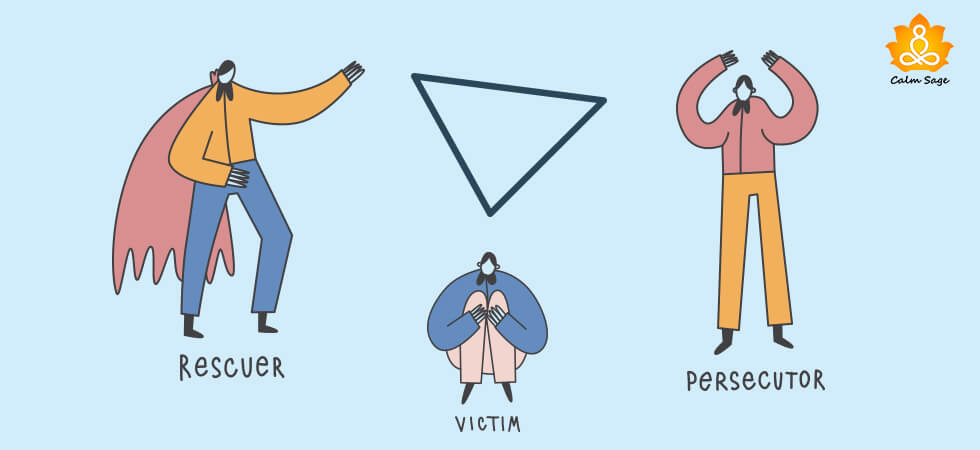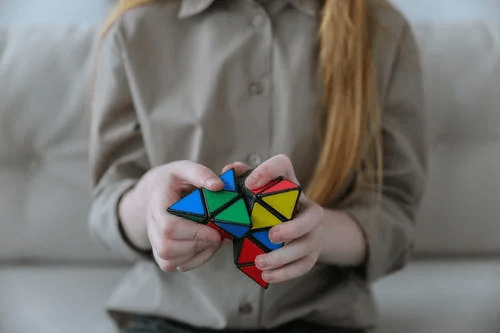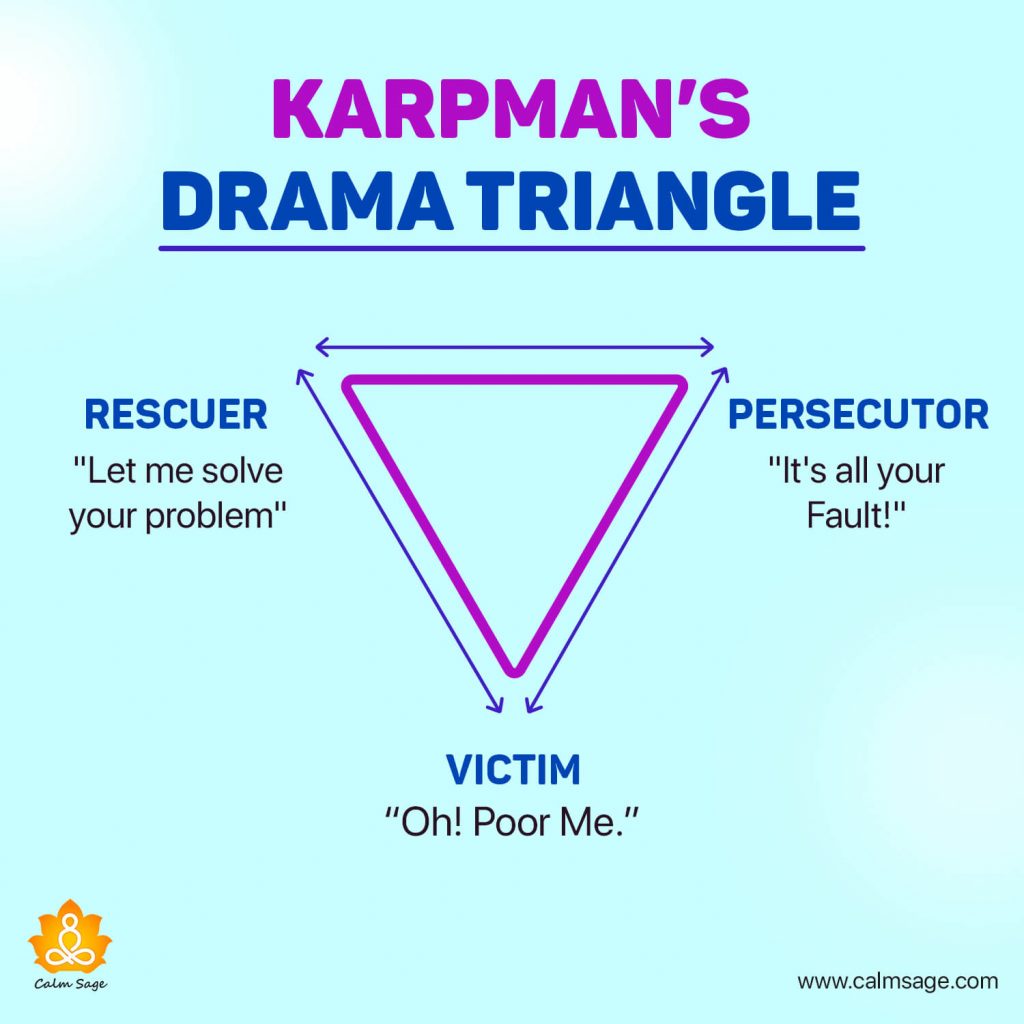All About Karpman’s Drama Triangle, Experts Say It Can Solve Conflicts!

Dr. Stephen Karpman, a renowned psychiatrist, was the one who introduced the world to his theory of The Drama Triangle also known as the Karpman Drama Triangle. There are three main characters in Karpman’s Drama Triangle, The Victim, The Persecutor, and The Rescuer. We will talk about them in detail later in the blog.
First, tell me, what is Drama to you? What makes a certain scenario a “Drama”? To me Drama is when things escalate very quickly in a conflict, that too without any good reason. I mean the conflicts we see in shows that we watch online clearly look like a drama to me.
Most series that we watch now and even those which aired years ago have three characters that are common in all plots, there is an obvious triangle of conflicts. They all have a victim, a prosecutor, and a rescuer and a combination of these three characters forms the Drama triangle.
Let’s dig deep into Karpman’s Drama Triangle, shall we?
What Is Karpman’s Drama Triangle?

Stephen Karpman, the psychiatrist, came about the drama triangle in the year 1968. According to Karpman, in a conflict, there are (usually) three people involved in forming the triangle of conflict. The one who always thinks it is his fault (the Victim), the one who always blames others (the prosecutor), and the one who always steps in to solve the problem ( the rescuer). All three of them form the drama triangle.
To you, this layout of character might seem conflict free because to the naked eye, it looks like a solved problem but in a true sense it’s quite the opposite. The Drama Triangle is a vicious cycle. Let me point out the hidden dysfunctionalities in these characters.
The victim always plays the victim card even when they might not even be the victim, the prosecutor has an unhealthy habit of always blaming someone else even when it is their fault and finally the rescuer jumps into solving everyone’s problems even when they are not required.
Can you spot the triangle of conflict? Now you see the problem?
Let’s look at each character separately, so that you can understand each side of the triangle of conflict, if I can have the liberty of calling it that!
Also read: Resolve Parent-Child Conflicts With the Golden 5:1 Rule| Put An End To Yes-No Fight
3 Main Characters Of The Triangle Of Conflict

According to Karpman, this drama triangle forms the base of all human interactions. He also stressed on the fact that each character has an important role to play in Karpman’s Drama Triangle.
By now you must know of all three characters of Karpman’s Drama Triangle. Let’s look at each character of the drama triangle in detail…
1. The Victim: According to Kaprman, the victim plays the most important and significant role in the triangle of conflict. He claims so because without the victim, the other two characters will not exist. The victim often feels powerless, helpless, oppressed and victimized at all times.
2. The Persecutor: This is a prerson who thinks that he is superior to the victim. This main role in the triangle is to blame the victim all the time with being sympathetic towards them. A persecutor is often seen as dominating, angry, authoritative, stern, and basically rude.
3. The Rescuer: The rescuer always comes in the support of the victim. They are always ready to help the victim. The rescuer can’t avoid the urge to help the victim. This makes the victim dependent on the rescuer. The rescuer chooses to help even when it’s not required.
Also read: Dealing And Recovering From A High-Conflict Divorce
The Role Each Character Plays In Karpman’s Drama Triangle
Karpman believed that these three are also the three different types of conflicts that we often see in our surroundings. Each one of us has core beliefs, these core beliefs then become the lens through which we begin to view ourselves.
- The victim has a core belief that he/she is helpless
- the persecutor has a core belief the he/she is superior and a know-at-all
- The rescuer has a core belief that he/she is the one who is needed by all, they believe that everyone’s seeking their help
According to the core belief of each character, they play their role in the drama triangle. This does become a vicious cycle before we even know it. Let’s look at some consequences of Karpman’s Drama Triangle before we look at how to break free of this cycle. But first, let’s see how the drama triangle works…
How Does The Drama Triangle Work?
All individuals are unique in themselves and have different personalities. Similarly, their needs are also very different from one another. Some have an undying desire to grow, some have an extreme need to belong, and some have a need to be appreciated, wanted, loved, etc.
Now, when our needs are not met, we unconsciously dive into the drama triangle and take up the role that fits us the most at the time. It’s not like we get stuck in one role, we keep switching from one role to another throughout our lives.
Here’s a psychological point of view of how each role of the Karpman’s drama triangle works;
- Playing the role of a victim: when you choose to be the victim you believe that something is happening to you. The things that are happening to you are out of your control and that’s why you become the victim. They feel like they have lost the power to do anything to fight their problems.
- Playing the role of a persecutor: when you play the role of a persecutor you begin to live in a false sense of superiority. You begin to control others or threaten them just because you think you have the power. These people blame others for their problems and their accusations are validated by the people who play victims.
- Playing the role of a hero: when you choose to play the role of a hero you are pumped by helping other people. You feel like you must help and resolve other people’s problems. They do it because it makes them feel good about themselves and not because they genuinely care about others.
The Negative Aspect Of the Karpman’s Drama Triangle
There are quite a few consequences that one has to face if one happens to be stuck in the vicious cycle of conflicts or the triangle of conflicts in Karpman’s Drama Triangle. Each character in the triangle of conflict goes through a lot of problems and suffering, none is spared.
- Fail to take responsibility for your action
- Quickly develops toxic core beliefs
- We have a feeling of pseudo empowerment
- They are in constant denial which often turns in impulsive behavior
- There is a lot of dishonestly in their thoughts, actions and behavior
- Projection is another trait the people in the Karpman’s Drama Triangle develop
- There is lack of intimacy in their lives
Also read: The Stress Of Family Conflicts: How To Resolve Family Disputes Effectively?
How To Break The Cycle Of The Karpman’s Drama Triangle
The Karpman’s Drama Triangle has not been generalized to all kinds of conflicts. It is specifically for those who play different roles of different characters in the triangle of conflict time and again and are often stuck in the loop.
Let’s understand it with an example: The mother asks her daughter to clean her room right after she is back from school and the father asks the mother to cut her some slack and free her from cleaning the room.
In this scenario, the daughter is the victim, mother is the prosecutor and father is the rescuer. In some other conflict all these members will be present but might play a different role in the triangle of conflict this time.
If you have found yourself to be stuck in the loop of Karpman’s Drama Triangle, here’s what you’re supposed to do.
Now, there are two models that show how one can break free from the Karpman’s Drama Triangle
- The empowerment dynamic
- The winner’s triangle
Let’s see what these models say about turning the tables from a negative triangle to a positive one.
According to the empowerment dynamic…
1. The Victim has to turn into a creator. If you identify as a victim you have to make an effort to turn the tables over, create opportunity for yourself.
2. The Persecutor has to turn into a challenger. If you identify as one, you really have to be honest and challenge the victim with different opportunities to make him reflect on his action and grow stronger.
3. The Rescuer has to turn into a guide/coach. If you identify as a rescuer, make sure you guide them through the journey and not live their journey for them. Be a guiding light, a coach and not a crutch.
According to the winner triangle…
1. The victim has to learn to identify their vulnerability, accept themselves and be more self-aware.
2. The prosecutor should drop overpowering the victim, instead, they should try to encourage the victim to solve his problem rather than blaming them.
3. The rescuer should draw a line as to how much help they should give. Solving the problem for the victim will help nobody.
That’s all folk!
I have tried to fit in all the information about Karpman’s Drama Triangle that I came across in this tiny blog. I hope you found this blog interesting.
Do share this blog with all your friends and family so that we are all acquainted with this triangle of conflict. Understanding Karpman’s Drama Triangle can be really helpful in understanding the conflicts that you might be stuck in.
Thanks for reading.
Take care and stay safe.




















